The construction industry has always relied on personal protective equipment (PPE) to ensure worker safety. However, as safety concerns grow, so does the need for innovative solutions. Smart PPE is transforming construction safety, offering real-time monitoring and enhanced safety protocols that incorporate advanced technology and go beyond traditional methods.
What is smart PPE?
In recent years, technological and scientific advancements have focused more on incorporating cutting-edge safety technologies, like sensor-based systems and advanced materials, to improve safety protocols on construction sites. That’s where Smart PPE comes in. Smart PPE combines wearable sensors, GPS, and IoT devices (which are designed for specific tasks and transmit data via the Internet or other networks) to continuously track workers’ health and environmental conditions in real time. This technology allows safety management to move from reactive to proactive approaches.
Benefits of smart PPE in construction
1. Better safety outcomes
Smart PPE offers significant safety improvements over traditional gear. With built-in sensors and real-time monitoring, these devices can detect hazards such as harmful gasses, extreme temperatures, or fatigue. For example, smart helmets can track a worker’s body temperature and alert them when they are at risk of heat exhaustion, prompting immediate action to prevent serious illness. This proactive approach helps reduce workplace injuries and ensures a safer environment for workers.
2. Increased efficiency
Smart PPE improves safety and enhances efficiency on the construction site. By automating safety checks and monitoring, supervisors can focus more on critical tasks like hazard assessments and training. Integrating smart technologies also reduces administrative burdens and improves compliance with safety regulations. Tools like GPS-enabled vests help track worker locations, optimizing workflow and communication across large job sites.
3. Data-driven insights
One of the most valuable aspects of smart PPE is its ability to collect data, which can be analyzed to identify patterns and trends. This data can help construction managers make informed decisions about safety protocols, identify areas of risk, and implement corrective measures before incidents occur. For example, by tracking PPE usage, managers can spot compliance gaps and ensure workers adhere to safety guidelines, thus fostering accountability.
4. Real-time communication
Smart PPE facilitates real-time communication between workers and supervisors, especially in hazardous environments. Devices like smart glasses allow workers to send alerts hands-free, while integrated sensors can notify teams of incidents immediately. This instant communication ensures faster response times in emergencies and helps prevent accidents.
What’s new in smart PPE
As workplace safety continues to evolve, smart PPE is at the forefront of innovation, offering new tools to protect workers like never before. Cutting-edge technologies like smart helmets and exoskeletons are finally making it to market, helping reduce fatigue and enhance work capabilities.
Exoskeletons
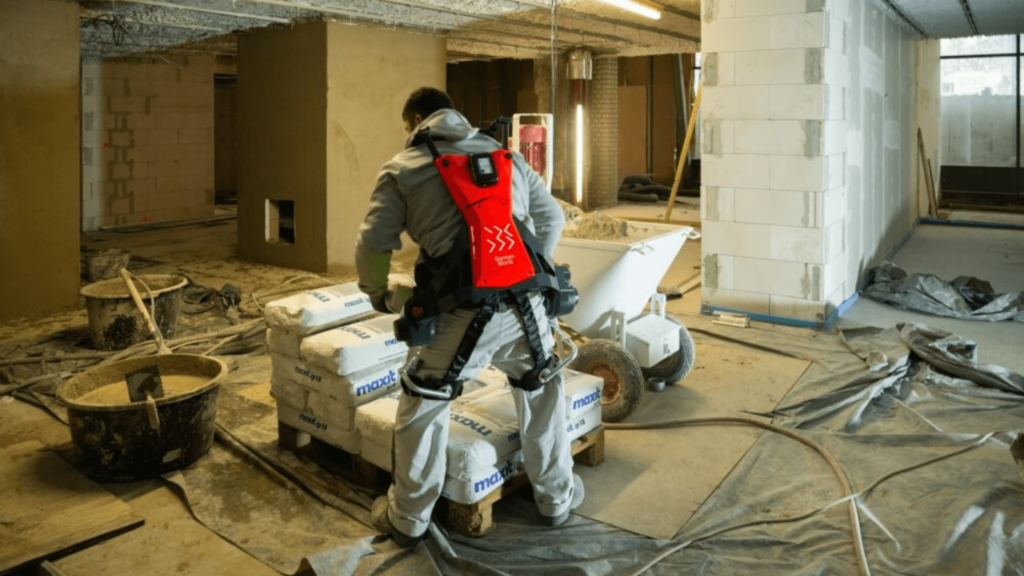
Exoskeletons are transforming physically demanding tasks on construction sites by providing workers with enhanced strength and support. For example, the Hilti EXO-01 is a lightweight, passive exoskeleton that reduces fatigue during overhead work. It’s electricity-free, making it perfect for tasks like installing drywall or piping. German Bionics exoskeletons are designed like full-body suits to help construction workers reduce physical strain, particularly during heavy lifting, bending, and other labor-intensive tasks. These wearable devices offer up to 80 lbs of weight compensation, easing the burden on workers’ backs and reducing the risk of musculoskeletal injuries, which are common in construction environments.
Smart helmets
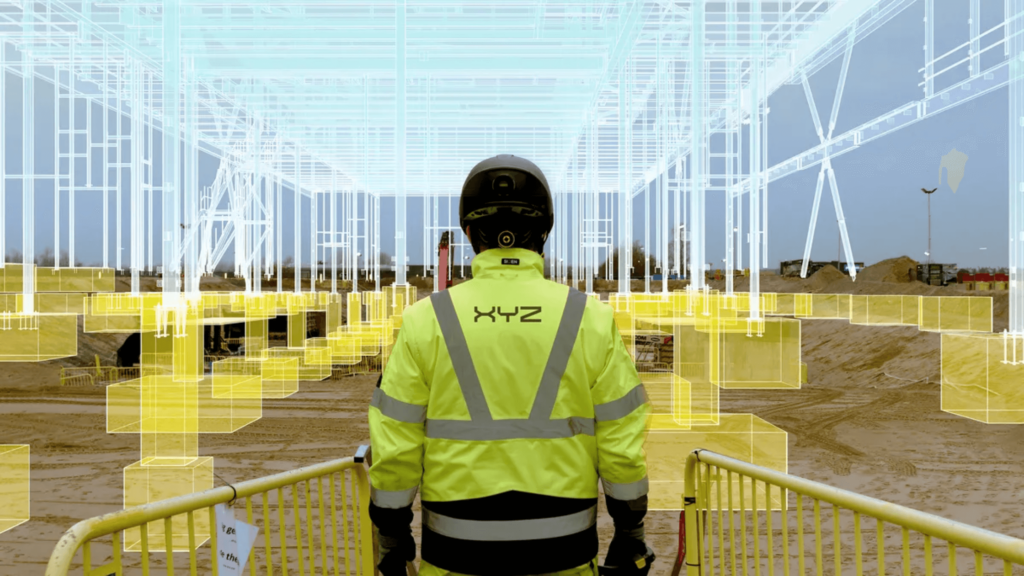
Smart helmets are transforming construction safety by leveraging cutting-edge technologies. XYZ Reality’s Atom AR helmet is designed for precise alignment on construction sites, projecting 3D augmented reality models overlaid onto the actual build. This ensures workers follow design specifications accurately, minimizing errors and improving project timelines. JePower’s 5G Smart Hard Hat features live streaming, environmental monitoring, and real-time hazard detection, making it essential for maintaining constant communication and safety alerts in fast-paced or hazardous environments.
Smart/AR glasses
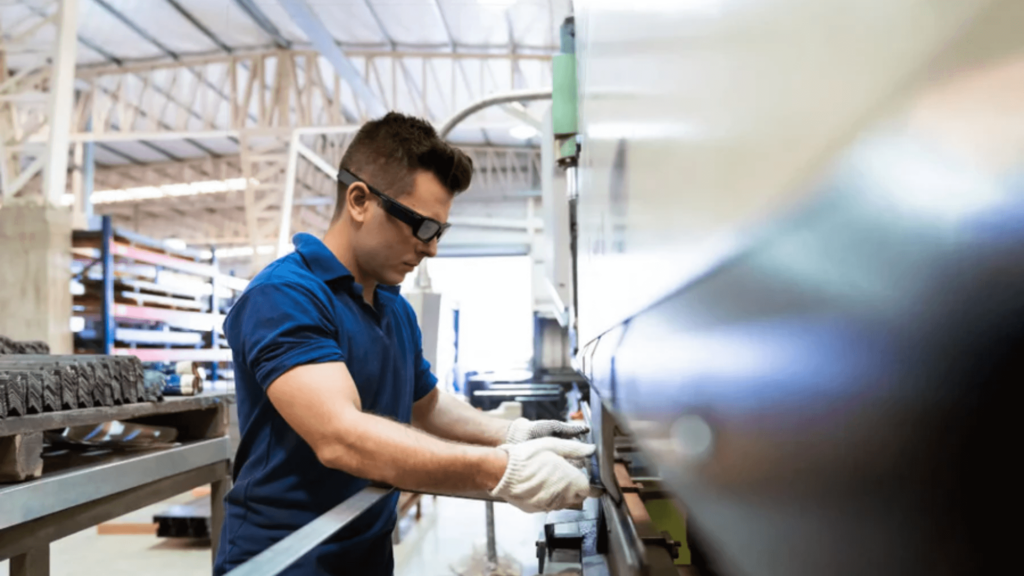
Augmented Reality (AR) glasses are becoming increasingly valuable for construction workers. The Vuzix Blade, a leading AR wearable, overlays real-time data like 3D models and blueprints directly into a worker’s field of view. This helps with precision and cuts down on errors. In addition, integrating with platforms like Topcon’s MAGNET software improves the ability to communicate on demand, ensuring that projects are completed faster and with fewer errors.
Wearable tech
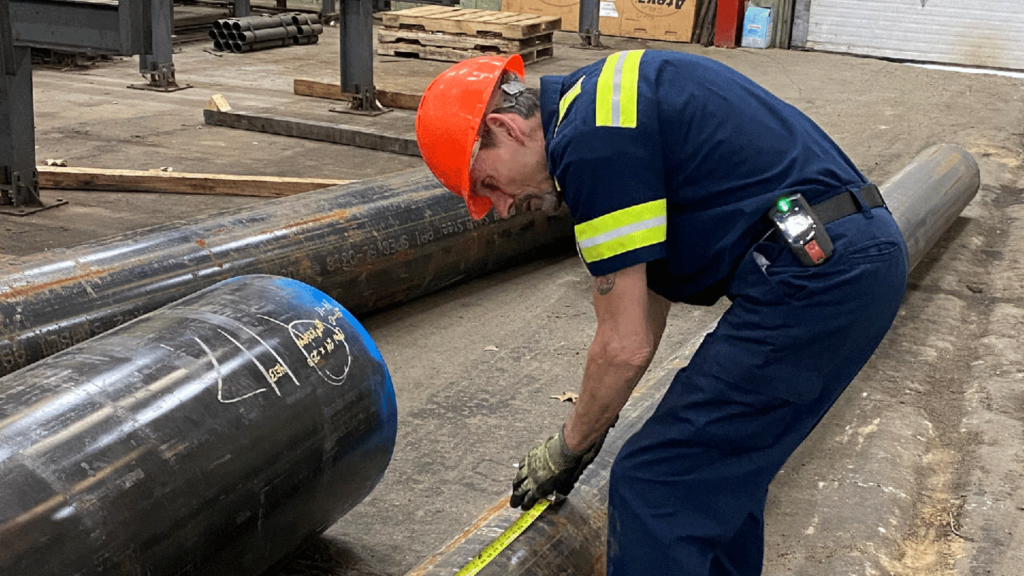
Wearable technology also enhances safety and efficiency in industries like construction and mining. Kenzen’s wearable strap monitors workers’ core body temperature, heart rate, and sweat to detect signs of heat stress and prevent fatigue-related incidents. This data-driven solution helps managers intervene before health issues escalate. Blackline Safety’s G7 wearables focus on gas detection and lone worker protection by providing real-time environmental monitoring, location tracking, and automatic alerts.
The challenges of adopting smart PPE
As innovative as smart PPE is, its adoption comes with notable challenges. These range from high initial costs and technical complexities to data privacy and worker acceptance concerns. Overcoming these hurdles is essential to fully realize the safety and efficiency benefits that smart PPE promises on job sites.
Cost
One of the primary challenges of adopting smart PPE in the construction industry is the high upfront cost. For example, exoskeletons like the Hilti EXO-01 typically cost around $1,500 to $2,000. More advanced models, such as the German Bionics full-body powered exoskeleton, can cost as much as $9,900 due to the high level of integration and capabilities it offers. However, smaller products like smart helmets and wearables can range from $200 to $500, making them much more reasonable to adopt, even for smaller construction companies.
Training
Another obstacle is the need for proper training to ensure that workers can effectively use smart PPE. Many construction workers are familiar with traditional equipment, and adopting new technology requires time and resources to educate the workforce. For instance, devices like the Vuzix Blade AR glasses demand a learning curve to interpret heads-up displays while navigating job sites. Without adequate training, workers may resist or fail to leverage the technology’s full potential.
Privacy concerns
The collection of real-time data through wearable devices introduces significant privacy concerns. Smart helmets, exoskeletons, and biometric monitoring systems continuously collect data on workers’ health, location, and performance. While this data can improve safety, it raises issues about how the information is used and stored. Employers must establish clear data protection policies to ensure compliance with regulations and maintain workers’ trust.
Integration with existing systems
Integrating smart PPE with a company’s existing infrastructure is another challenge. Many construction firms still use manual safety protocols and traditional communication systems. The shift to smart technology, which often requires syncing devices like smart helmets and wearables with centralized management systems, can be complicated. Ensuring these technologies work seamlessly across a job site without causing disruption requires careful planning and investment in compatible systems.
Bottom line
Adopting smart PPE in construction is undeniably transformative, offering significant safety enhancements and operational efficiencies. However, the high upfront costs remain a barrier, particularly for advanced devices like exoskeletons and smart helmets. While these technologies can reduce long-term injuries and improve productivity, their success depends heavily on proper worker training and seamless integration with existing systems. Ultimately, as costs decrease and technology advances, smart PPE has the potential to become a staple in construction. Still, the industry must balance its benefits with the financial and logistical challenges that come with it.
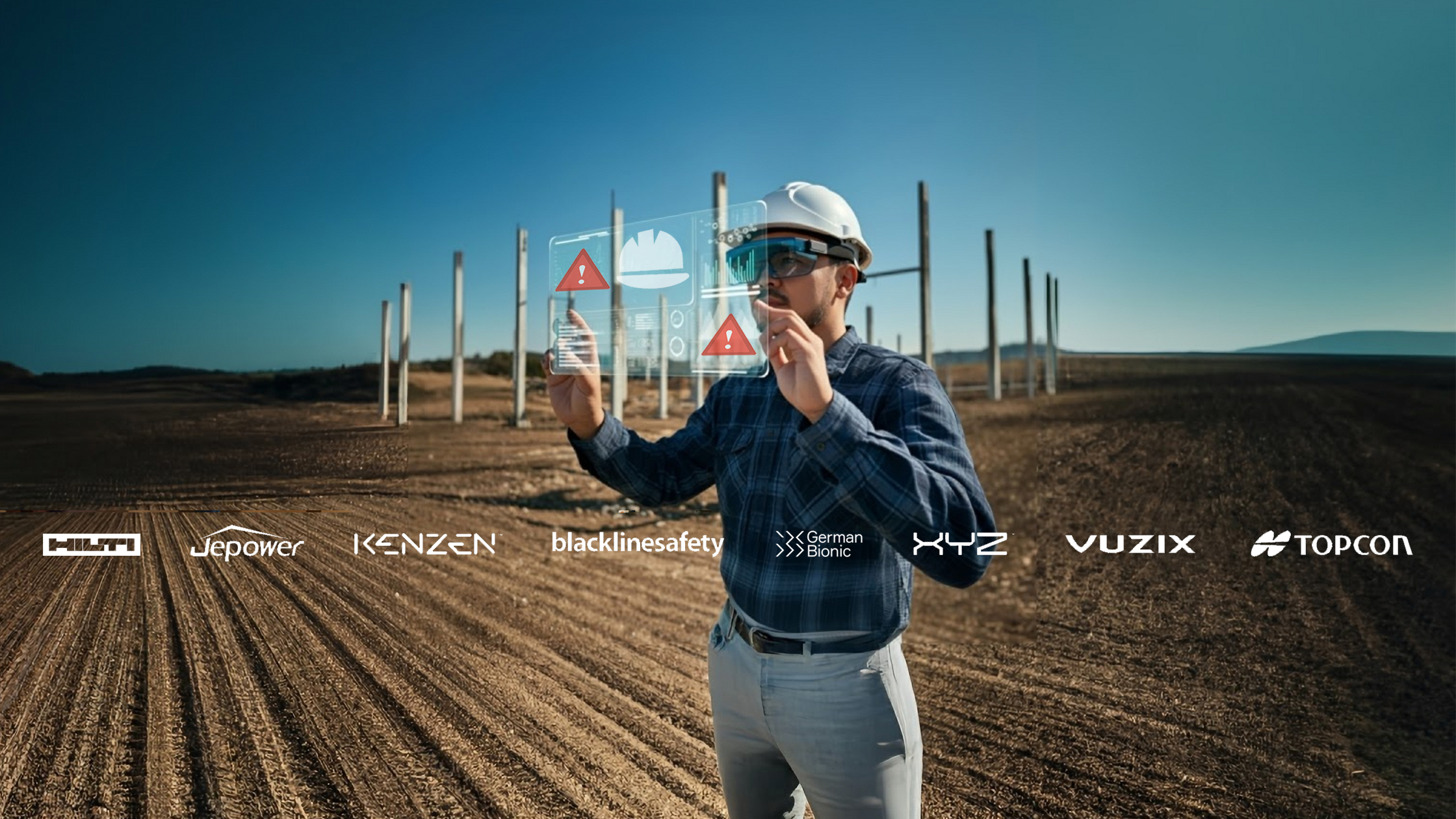


6 comments